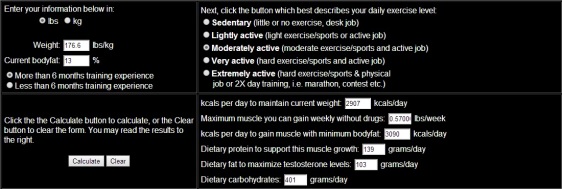Today was a busy day on the fitness side of life. It was also busy on just the life side of things. I got the house cleaned and vacuumed, the kitchen cleaned and the floors mopped, I called the cable company to handle some business , and knocked out a little bit of studying for primary. Now I am just waiting for the wife and kid to come home.
So what was the workout? Well since there was a communication error last week, I ran my PRT today. Despite not running in the last 8 weeks or so, I ran an 11:30 mile and a half. After the PRT I went inside the gym and got to work for real. The humidity killed me and so after the run I decided to skip the CrossFit WOD. I moved right into my Back/Bicep/Calves routine. Today I performed:
4 sets of dead hang pull-ups AMAP
3×10 T-bar rows
2×12/2×6 Barbell curls- the first group was normal and the second was heavy/cheat
In between the curl sets I added rope pulls for :30
3×10 Incline Dumbbell curls
4×10 Leg Press Calf Raises
4×15 Seated Calf Raises
I pushed each set to the heaviest weight I could tolerate and really felt like I got an incredible workout. I left in a puddle of sweat and was hammered.
Once I got home I realized I have been running blind for a few weeks and not as focused and prepared for this bulk phase as I should be. So I started over; sorta. I weighed in this morning and was 176.6 pounds. This is just over 8 pounds from my goal. Later in the day I took some measurements for body fat calculating. Using a tape measure and HealthStatus.com, I found my body fat to be about 15%. This is obviously not the most accurate way to measure body fat and so I also used my calipers and linear-software.com to find a second more accurate you number. This time I got 11.6. I then averaged the two numbers and am using 13% as my body fat. If you compare this to the pictures below, from BuiltLean.com, I am definitely not quite 15% but not the 10-12% either, I am in between.
After coming up with a good body fat estimate, I then went to weight-trainer.net and calculated my lean bulk calories. Here is a table from the website showing my stats:
 Based on the above diet numbers and the approximate muscle gain per week, I will spend about 14 weeks gaining the 8 pounds and reaching my goal. My current routine is a 12 weeks cycle and if you assume some fat will be added with the muscle, then I should be 185 in about 12 weeks, not 14.
Based on the above diet numbers and the approximate muscle gain per week, I will spend about 14 weeks gaining the 8 pounds and reaching my goal. My current routine is a 12 weeks cycle and if you assume some fat will be added with the muscle, then I should be 185 in about 12 weeks, not 14.
After adjusting my calorie intake in my calorie counter, I went to the Big Man on Campus and printed the calendar. Now as I complete the each day I will mark it off. This will keep me accountable and ensure I am following the routine correctly.
Tomorrow I plan on taking body measurements for chest and biceps, etc. My weigh in plan is every Friday so I can ensure I am not gaining too much weight too quickly. This would mean I am adding fat not muscle. However I will only calculate body fat and retake measurements every 4 weeks. Those items are not affected as quickly and can cause you to chase the tape or even get discouraged.
Tomorrow is strictly a CrossFit, but I may add a little cardio.








